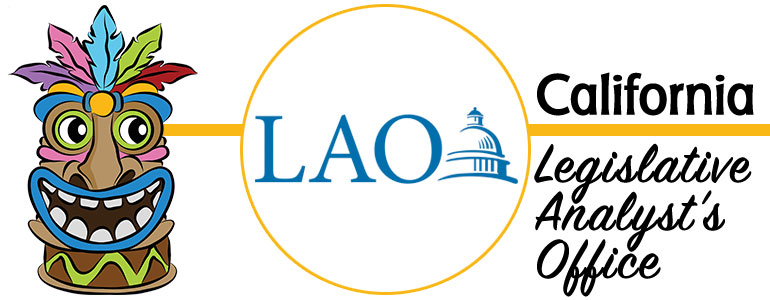
February 15, 2023
Our office will publish shorter, more focused budget analyses over the next few months. In most cases, rather than sending out an announcement for each publication, we will provide periodic updates with the key takeaways from recent pieces. All of our 2023-24 budget analyses to date can be found here.
The 2023-24 Budget: Department of Developmental Services
- Governor’s Budget Proposal Contains Relatively Few Major New Initiatives for the Department of Developmental Services (DDS). We do not raise major questions or concerns with either its proposals or its underlying caseload assumption.
- State Faces Major Questions About Soon-to-Be-Implemented Quality Incentive Program. The state’s recent acceleration of DDS service provider rate reform means providers will soon be required to meet as-yet undetermined quality improvement standards in order to receive their full rate. The Legislature may wish to consider lengthening the time line for the Quality Incentive Program to give providers additional time to familiarize themselves with the new requirements.
- Relatively Little Progress in Several Areas of Longstanding Legislative Interest. This includes large disparities in per person expenditures between different racial and ethnic groups, increasing caseloads for service coordinators, and relatively few consumers placed in competitive employment.
LAO Contact: Ryan Anderson
The 2023-24 Budget: University of California
- Link UC Funding Increase to Spending Priorities. The Governor’s main proposal for the University of California (UC) is a $216 million (5 percent) ongoing base increase. Rather than providing an unrestricted increase, we recommend the Legislature designate funding for the specific operating costs it wishes to support.
- Revisit UC Enrollment Expectations. The 2022-23 Budget Act provided UC with $52 million contingent on it increasing resident undergraduate enrollment by 4,730 students in 2023-24 over 2021-22. UC expects to grow by 4,197 resident undergraduate students in 2023-24 (533 students lower than the target). As budget solutions, the Legislature could recognize associated General Fund savings of $8.6 million in 2023-24 and $52 million in 2022-23 (given no additional students are being served this year). We recommend the Legislature also set a 2024-25 enrollment target for UC.
- Reconsider Certain UC Capital Projects. As part of his package of budget solutions, the Governor proposes to delay $366 million in one-time funding for four UC capital projects until 2024-25. Rather than delaying funding, we recommend the Legislature revisit whether to proceed with each of these projects. Most of the projects are in very early planning phases, have spent little or no state funds to date, lack key project information, and are not urgent.
LAO Contact: Ian Klein
The 2023-24 Budget: Multiyear Assessment
- Future Budget Shortfalls Very Likely. The state very likely will face a larger budget problem in May. Our best current estimate is that revenues for 2022-23 and 2023-24 will be $10 billion lower—implying a larger budget problem of about $7 billion. (Many other factors also will affect the actual size of the budget problem.) The state also faces operating deficits in future years under the Governor’s budget. Our analysis suggests it is quite unlikely revenues will grow fast enough to support the spending level currently proposed.
- We Advise Holding Off on Using Reserves for Now. The main benefit of reserves is that they help the state to maintain its core spending over the long term, despite the state’s volatile revenue structure. Using reserves now would mean the state would have less reserves available to pay for its core services if revenues declined further or in the event of a recession. Although state revenues are moderating from a historic peak, they are not yet consistent with recessionary levels. We recommend the Legislature hold off on using reserves unless revenues decline by more than the $10 billion identified in this report. Revenue declines beyond $10 billion would reflect levels below historical averages and could impact the state’s core spending level. If revenue losses go beyond an additional $10 billion through 2023-24, we think using reserves would be warranted.
- Alternatives for Addressing the Budget Problem. Instead of making withdrawals from reserves, there are a variety of other actions the Legislature can take to address the additional shortfall we have identified in the report. In particular, the Legislature could consider: (1) suspending deposits into the state’s rainy-day fund (although this would require action by the Governor); (2) reducing more one-time and temporary spending; (3) shifting more costs than currently proposed by the Governor; and/or (4) increasing revenues, for example on a temporary basis.
LAO Contact: Ann Hollingshead
The article above was released by the non-partisan California Legislative Analyst’s Office.
